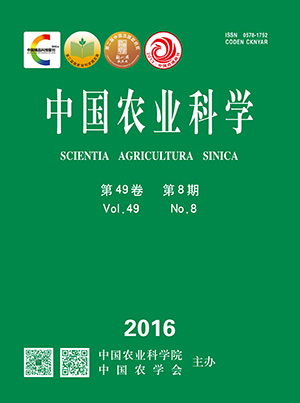-
The Analysis of Chromosome Karyotype of Malus sieversii Germplasm Resources Infraspecies in Xinjiang
- MAYNUR·turdi, ZHANG Yan-hui, QIN Wei, SI Hong-zhang, YANG Xin-feng
-
Scientia Agricultura Sinica. 2016, 49(8):
1540-1549.
doi:10.3864/j.issn.0578-1752.2016.08.011
-
 Abstract
(
578 )
Abstract
(
578 )
 HTML
(
2 )
HTML
(
2 )
 PDF (3354KB)
(
455
)
PDF (3354KB)
(
455
)
 Save
Save
-
References |
Related Articles |
Metrics
【Objective】 As a main wild apple germplasm resources in Xinjiang Ili area, as a special branch of apple resources in our country, it is of great significance to enhance the research of protecting the richness of apple germplasm resources. Aiming to discuss the genetic relationship with them, provide a scientific basis for the development and utilization of Malus sieversii resources. 【Method】 Twenty-four germplasm types which are collected and studied from Yili. Between the beginning of April and the middle of April, selecting the tender stem, tableting with the improved chromosome preforming methods for the karyotype analysis of the Xinjiang Malus sieversii. According to the chromosome number of different types and the relative length, average arm ratio, the karyotype characteristics were analyzed.【Result】 (1) All of the twenty-four type under species are diploid, whose chromosome number in all Malus sieversii types are 2n=34. And the length of the chromosome is 3.23 μm, so they belong to small chromosomes. Viewing the position of the centromere, there are different numbers of “m” and “sm” chromosomes in most of all types, the “m” type is only in very few types. Karyotype formula are four types: 2n=2x=34=34m, 2n=2x=34=30m+4sm, 2n=2x=34=28m+6sm, 2n=2x=34=32m+2sm. Viewing the length of the chromosome, except for the xiang-suan and chang-bing wild apple , the rest of the types owns long chromosome (L), middle long chromosome (M2), middle short chromosome (M1), and short chromosome (s), and it was not seen the satellite in them. (2) the range of the arm ratio is from1.27to1.56, and the symmetry the karyotype is in the range of 56.01%-63.39%, the most karyotype characteristics is 1A and 1B, 2A and 2B only exist in some few types, the percentage of which is 41.67%, 37.5%, 8.33%, 12.50%. (3) evolutionary trend diagram shows that yellow round wild apples are the most special, its karyotype asymmetry coefficient is the highest (63.39%), and also has the highest degree in its evolution, followed by Huocheng round wild apple and scent apple, and the small wild apple has the least degree in its evolution (56.01%). The evolution trend of the rest of the 20 kinds of germplasm type has high consistency and is relatively concentrated, among them, the big flat heart wild apple's level of evolution is the lowest. (4) According to the results of cluster, 24 kinds of germplasm types are divided into three categories. The first category includes 9 kinds of germplasm types, they have higher karyotype feature similarity, most types’ average arm ratio are greater than others, combining evolutionary trend results, found their evolutionary trends are higher than other groups. The second category includes 11 kinds of germplasm types, most karyotype types are 1B, 2A, and 2B. The third category includes 4 kinds of germplasm types, their average arm ratio and karyotype asymmetry coefficient are both the minimum, karyotype type belong to 1A and 1B, all above show that the genetics of this group is relatively stable. 【Conclusion】 To some extent , there is a difference on the karyotype of xinjiang Malus sieversii,according to the karyotype, it could be classified and then judging the evolutionary trend, compared with the traditional classification method, it has revealed the genetic relationship among the germplasm types is clearer, the result of clustering can better reflect the similarities and differences among the types. Using the karyotype comparative analysis, the evolutionary trend of wild apple germplasm resources in Xinjiang Yili were revealed, which has a very important function in the further evolutionary study.









